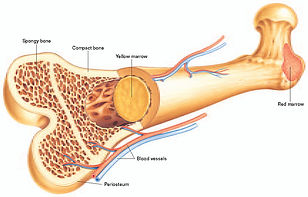Stem Cells
Revolutionizing Medicine

Timeline
1868
Ernest Haeckel coined the term “stem cell” to describe a fertilized egg that develops into a organism.
1878
The first attempts of external fertilization, in which mammalian eggs are fertilized outside the female’s body, are reported.
1909
Alexander Maximow delivers a lecture on his theory that blood cells were derived from the same ancestral cell, thus revealing the multipotency of stem cells.
1956
The first allogeneic bone marrow transplant was performed by Dr. E Thomas. The patient had recently undergone radiotherapy due to leukemia and received a healthy bone marrow, which successfully replaced the damaged cells.
1963
Ernest McCulloch and James Till conducted experiments on mice and discovered indications of blood stem cells.
1981
While studying mice embryos, scientists, Martin Evans and Gail Martin, became the first to isolate embryonic stem cells.
1997
Ian Wilmut, along with his colleagues at the Roslin Institute, announced their fusion of a sheep egg with an udder egg, resulting in the birth of Dolly the sheep, the first artificial animal clone.
1998
Led by James Thomson and Jeffrey Jones, a research team from the University of Wisconsin reported the first isolation of human embryonic stem cells, revealing the potential of stem cells for drug testing and as a source of cells for transplants.
2001
President George W. Bush limited federal funding of ESC research, since it involved the destruction of the embryo. However, Bush allowed research on ESC lines that were created before the policy to continue.
2006
Shinya Yamanaka developed a method of reprogramming adult cells by altering its genes to form induced pluripotent cells (iPS), which function like embryonic stem cells. His discovery eliminated the need to destroy the embryo.
2008
The Stem Cell Program of Boston’s Children's Hospital’s introduced 10-disease specific induced pluripotent stem cell lines. This provided models for scientists to study the development of certain diseases with the hope of developing ways to prevent and treat them.
2008
A team of researchers from Harvard report an experiment,in which a mouse pancreatic exocrine cell is reprogrammed into insulin-producing cell. Their findings reveal the possibility of reprogramming adult cells into a different kind of adult cell, without having to create induced-pluripotent cells.
2009
President Barack Obama repeals the 2001 restrictions and allows federal funding on ESC research.
2009
The phase I trial of Geron Corperation’s new treatment for spinal cord injuries was approved by the FDA. It signifies the first clinical trial for a embryonic stem cell based therapy to be approved by the FDA.
2014
A international collaboration, “Project Grandiose”, led by Andras Nagy, discovered a new type of pluripotent cells, “F-class”. They are known to proliferate faster than other cells, and ultimately, its discovery has brought up the idea that pluripotent cells are not limited to just one type.
2017
Researchers, led by Dr. Brendan Harley, at the University of Illinois report that blood cells exposed to collagen, which frequently interacts with cells within the matrix. They discovered that collagen can cause stem cells to proliferate faster, thus opening up new possibilities for improving leukemia and lymphoma treatments.



Even today, the bone marrow continues to be used a source of stem cells to treat patients with blood cancer or disorders.
President Bush's policy on stem cells was enacted due to the rising concern that "human life" was being destroyed.
Shinya Yamanaka and his team are the first group to generate iPS cells.